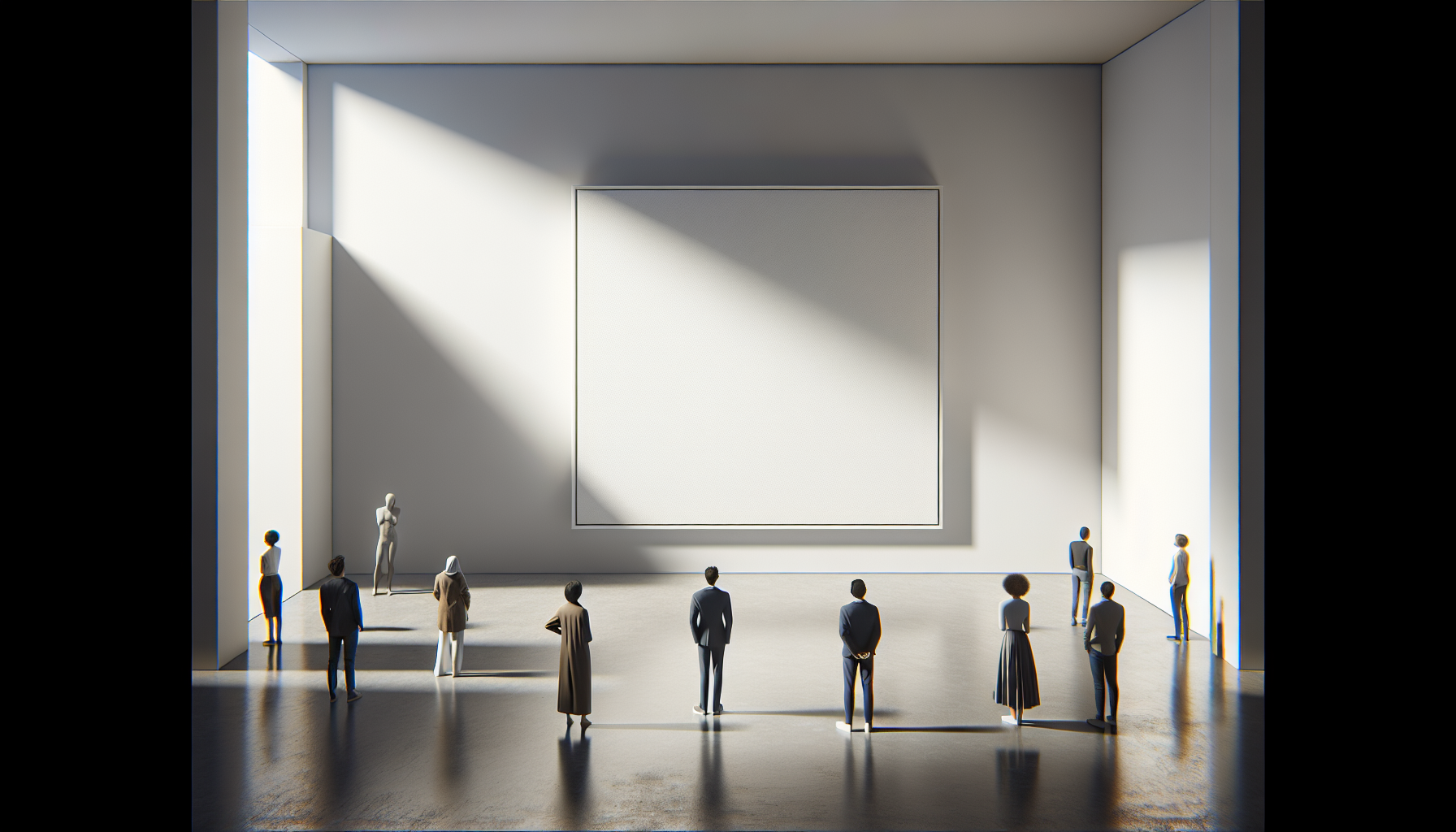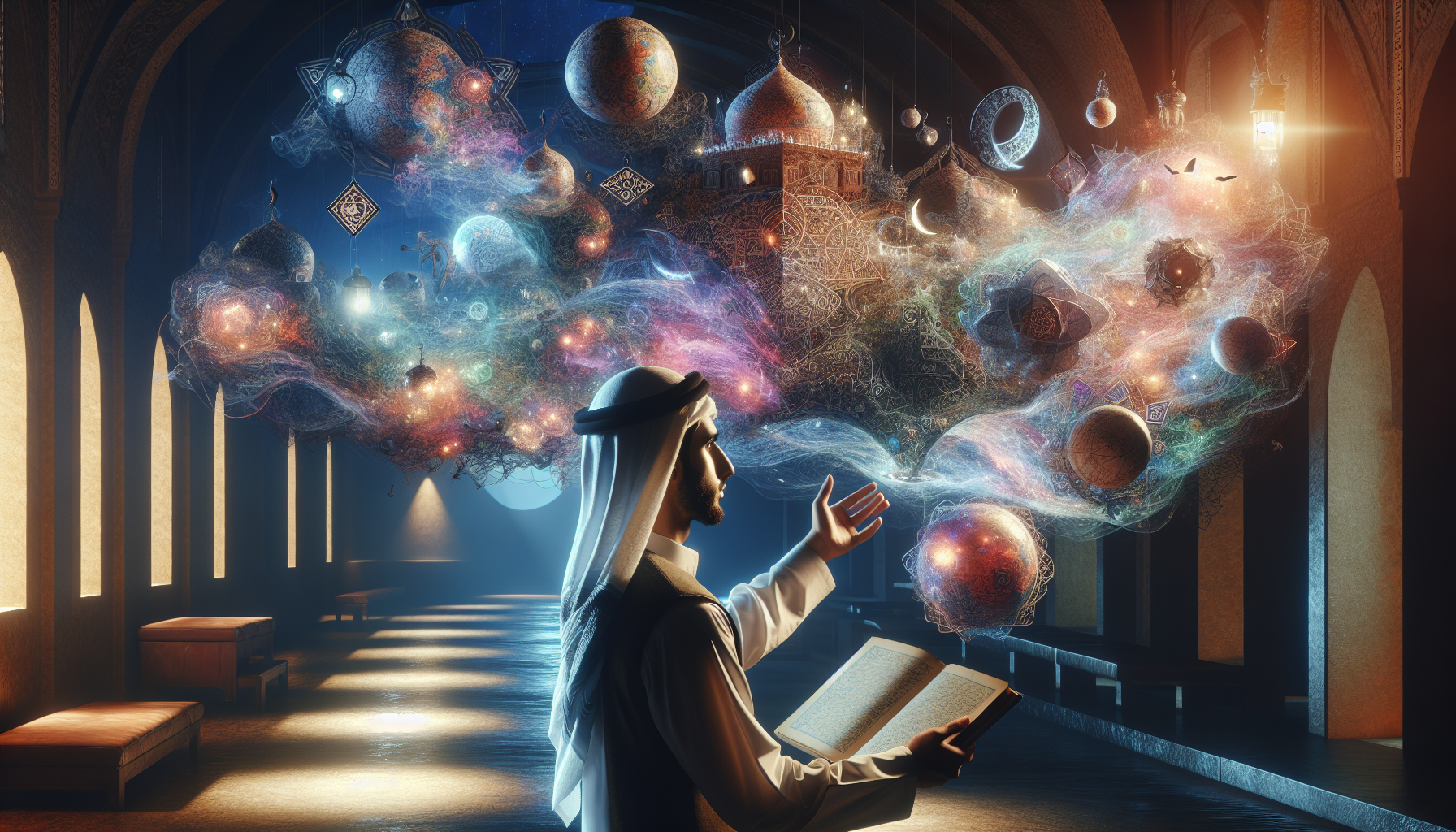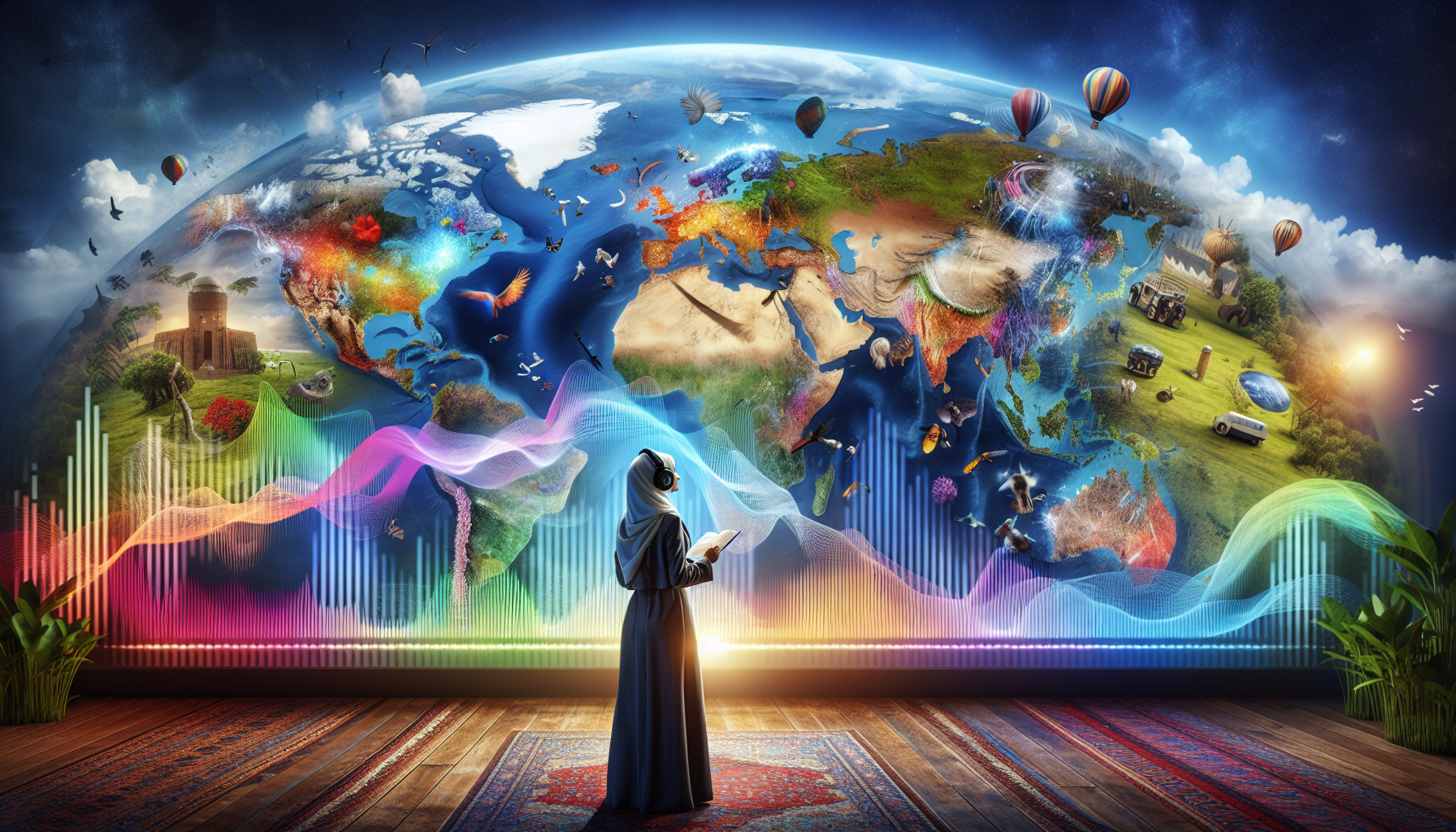Annoncer
In the world of communication, what we say is often deemed crucial. Words are chosen carefully, phrases crafted meticulously, and messages delivered with precision. Yet, what if the real power lies not in what we say, but in what we don’t? Welcome to the intriguing realm of blank spaces—those deliberate omissions and silent pauses that, despite their emptiness, resonate with profound meaning. From the white canvas of a modern art masterpiece to the quiet pauses in a compelling speech, blank spaces have the power to convey emotions, evoke imagination, and invite contemplation in ways that words alone sometimes cannot. In this exploration, we will unlock the hidden potential of these spaces, understanding how what’s left unsaid can often speak the loudest. 🌌
Annoncer
Throughout this article, we will delve into the multifaceted role that blank spaces play across various domains. We’ll begin by examining their significance in visual arts, where the absence of elements is as crucial as the presence. Artists like Agnes Martin and Kazimir Malevich have mastered the art of minimalism, using voids to evoke emotion and provoke thought. By analyzing their works, we can understand how blank spaces contribute to the overall narrative and impact of a piece. Moreover, we’ll explore how these concepts extend beyond the canvas into graphic design and architecture, where negative space is skillfully employed to create balance, focus, and a sense of harmony.
Annoncer
The conversation then shifts to the realm of literature and storytelling, where blank spaces become a powerful tool for authors and poets. We’ll uncover how writers like Ernest Hemingway and Virginia Woolf have utilized silence and ellipses to create tension, build suspense, and allow readers to fill in the gaps with their imagination. In poetry, the strategic use of line breaks and stanzas can evoke a rhythm and pacing that amplifies the emotional weight of the words. By leaving certain things unsaid, authors invite readers to become active participants in the storytelling process, making each interpretation unique and personal.
Finally, we’ll turn our attention to the everyday communication that shapes our interactions. In conversations, pauses and silences can often communicate more than words themselves. We’ll explore the dynamics of dialogue, understanding how strategic pauses can express hesitation, convey confidence, or signal a transition. In public speaking, the art of the pause can enhance storytelling, create suspense, and emphasize key points. As we navigate through these topics, it becomes clear that blank spaces are not mere voids, but powerful communicative tools that, when harnessed effectively, can enrich our understanding and appreciation of the world around us. By the end of this article, you’ll gain a newfound appreciation for the eloquence of silence and the potency of what’s left out. 🚀
The Hidden Impact of Negative Space in Design
In the world of design, what is left out is just as significant as what is included. Negative space, also known as white space, refers to the empty areas surrounding the main elements of a design. While it might seem like a waste of space, negative space plays a critical role in enhancing visual aesthetics, guiding viewer focus, and improving the overall user experience. Designers across various fields, from graphic design to architecture, leverage the power of negative space to create balance, clarity, and emphasis. Understanding how to use this tool effectively can elevate a design from merely good to outstanding.
Negative space is not just a passive background; it actively participates in how an audience perceives and interacts with a design. For instance, in graphic design, strategically placed negative space can draw attention to the main subject, making it stand out more prominently. This principle applies across different mediums, whether it’s a logo, website, or a piece of art. By creating a visual hierarchy, negative space helps to guide the viewer’s eye to the most critical parts of the design, ensuring that the message is communicated clearly and effectively.
The psychological impact of negative space is profound as well. It provides a moment of pause and rest for the viewer’s eyes, reducing cognitive load and making the content more digestible. This is especially important in today’s fast-paced digital environment, where users are bombarded with information from all sides. By incorporating ample negative space, designers can create a sense of calm and order, allowing the audience to engage with the content without feeling overwhelmed. To understand these concepts further, watch the video “The Power of White Space” on the YouTube channel The Futur.
Practical Applications of Negative Space
One of the most striking examples of negative space in use is in logo design. Logos are meant to be simple yet memorable, and negative space is a critical tool in achieving this balance. The FedEx logo, for example, cleverly uses the space between the ‘E’ and the ‘x’ to form an arrow, symbolizing speed and precision. This hidden element not only adds depth to the design but also reinforces the brand’s core message in a subtle yet powerful way. Negative space in logos invites viewers to look closer, engaging them more deeply with the brand.
Another area where negative space is effectively utilized is in web design. Websites with ample negative space are often perceived as more modern and easier to navigate. This is because the space around elements provides breathing room, making the content more accessible and less cluttered. An effective use of negative space can direct the user’s focus toward the call to action, improving conversion rates. Websites like Apple’s, which are renowned for their minimalist design, use negative space to highlight products and features without overwhelming the visitor with information.
In art, negative space can transform a composition entirely. Artists like M.C. Escher have famously manipulated negative space to create illusions and impossible figures, challenging viewers’ perceptions. In painting and photography, negative space can evoke emotions and tell stories without using a single word. By playing with the empty spaces around subjects, artists can add meaning and depth to their work. Negative space allows for a conversation between the artwork and its audience, encouraging multiple interpretations and engaging viewers on a deeper level.
Comparing the Use of Negative Space Across Disciplines
Different disciplines utilize negative space in unique ways, each tailored to their specific needs and goals. To illustrate this, consider the following table comparing the use of negative space in graphic design, web design, and architecture:
| Discipline | Purpose of Negative Space | Eksempler |
|---|---|---|
| Graphic Design | To create emphasis and direct viewer focus | Logos (e.g., FedEx, NBC) |
| Web Design | To improve readability and navigation | Websites (e.g., Apple, Google) |
| Architecture | To enhance spatial perception and flow | Open floor plans, minimalistic designs |
In architecture, negative space is used to shape the flow of a space, influencing how people move and interact within an environment. Open floor plans and minimalist designs leverage negative space to create a sense of openness and continuity. This approach can make smaller spaces feel larger and more inviting, enhancing the overall experience of a building’s interior. Architects use negative space to frame views, create focal points, and balance the built environment with its natural surroundings. To see these principles in action, consider watching “The Art of Minimalism: Why Less is More” by the channel Never Too Small on YouTube.
Maximizing Negative Space for Effective Communication
Communicating effectively through design often involves knowing not just what to include, but what to omit. Negative space is a powerful tool in this regard, allowing designers to emphasize key elements without distraction. In advertising, for instance, a minimalist approach with ample negative space can make a statement more impactful, as the absence of clutter emphasizes the core message. Brands that utilize negative space effectively often convey a sense of sophistication and clarity, distinguishing themselves in a crowded marketplace.
When designing printed materials, such as magazines and brochures, negative space is used to break up text and images, making the layout more inviting and easier to read. By strategically using space, designers can guide readers through the content in a logical order, enhancing comprehension and retention. This technique is particularly useful for complex information that requires careful attention, as it helps to prevent information overload.
- Use negative space to enhance readability and focus.
- Incorporate strategic empty spaces in your designs.
- Experiment with different proportions to find balance.

Konklusion
Conclusion: Unlocking the Power of Blank Spaces: How What’s Left Out Can Speak Volumes
In exploring the profound potential of blank spaces, this article has traversed various landscapes, from art and design to communication and psychology. We’ve discovered that what is often overlooked—those empty, unfilled spaces—can be just as impactful as what is visibly present. By harnessing the power of blank spaces, we allow for a more profound engagement with content, facilitating creativity, understanding, and interpretation.
Firstly, we delved into the world of art and design, where negative space is not merely an absence but a strategic element that guides the viewer’s eye and evokes emotion. The works of artists like M.C. Escher and designers from the Bauhaus movement illustrate how blank spaces can frame and highlight focal points, creating a balance that enhances the overall composition. This principle is echoed in modern web and graphic design, where white space improves readability and user experience, emphasizing the importance of minimalist approaches in our digital age.
Transitioning to communication, we examined how what is unsaid often resonates more deeply than the spoken word. In literature, authors like Ernest Hemingway have mastered the iceberg theory, where the underlying meaning is revealed through subtext and omission. In conversation, pauses and silences allow for reflection and give weight to the spoken word. The ability to listen and understand what is not said is a skill that fosters deeper connections and empathy.
The psychological aspect of blank spaces is equally compelling. Our minds crave completion and understanding, and when presented with gaps, we are naturally inclined to fill them with our own interpretations and emotions. This cognitive tendency, known as closure, allows for personal engagement with material, making learning and retention more effective. Educators and marketers can harness this by strategically incorporating gaps that encourage active participation and thought.
The exploration of blank spaces also touched on the cultural and philosophical dimensions, where different traditions and philosophies perceive emptiness as a state of potential and possibility. In Zen Buddhism, for example, emptiness is seen as a space for growth and enlightenment, reminding us that letting go of clutter, both physical and mental, can lead to clarity and focus.
As we reflect on these insights, the importance of blank spaces in our daily lives becomes evident. They are not voids to be filled but opportunities for creativity, understanding, and connection. In a world that often values excess and constant communication, embracing the power of what is left out can lead to more meaningful interactions and experiences.
Therefore, I encourage you, dear reader, to consider the blank spaces in your own life. Whether in your creative endeavors, communication style, or personal growth, recognize their potential to speak volumes. Experiment with incorporating more space into your designs, allowing for pauses in conversations, and embracing the unknown as a catalyst for innovation and understanding.
Finally, let’s continue this conversation. Share your thoughts and experiences with blank spaces in the comments below. How have they impacted your life, and how might you apply these concepts moving forward? Feel free to share this article with others who might benefit from understanding the power of what is left out. Together, we can unlock the vast potential of blank spaces and harness their ability to enrich our lives and the world around us. 🌟
For further reading on the topics discussed, explore these valuable resources:
– The Art of Empty Spaces: Negative Space in Design
– Understanding the Iceberg Theory: Hemingway’s Writing Style
– The Power of Silence in Communication
– Zen Buddhism and the Concept of Emptiness
Thank you for joining us on this exploration of blank spaces and their profound influence. We look forward to hearing your insights and seeing how you might apply these concepts in your own life.
Toni Santos er digital kartograf, visuel tænker og kurator for det vidunderligt underlige. På Aysapp, dykker han ned i den vilde verden af bizarre kort, forestillede geografier og alternative kartografiske virkeligheder, der tilbyder et nyt perspektiv på, hvordan vi ser - og føler - verden omkring os.
Hans arbejde er forankret i troen på, at kort er mere end navigationsværktøjer. De er portaler til opfattelse, hukommelse, fantasi og endda myter. Fra forvrængede historiske diagrammer til surrealistiske landformer, konspirationsatlas og AI-genereret verdensbygning, Toni laver og samler kort, der udfordrer logikken og vækker nysgerrighed.
Med en baggrund i historiefortælling, kunst og symbolsk udforskning, bruger Toni Aysapp som en platform til at afsløre glemte steder, usynlige grænser og gentænkte virkeligheder. Hans kreationer stiller spørgsmål som: Hvad hvis verden var på hovedet? Hvad hvis kort fortalte følelsesmæssige sandheder i stedet for geografiske?
Som skaberen bag Aysapp, han er på mission til inspirere til nysgerrighed, tilskynd til kreativ tankegang og udforsk krydsfeltet mellem fantasi, kultur og rumlig historiefortælling - ét mærkeligt kort ad gangen.
🌀 Hans kartografiske univers udforsker:
-
Uvirkelige, men meningsfulde landskaber
-
Følelser, hukommelse og myter som geografi
-
Kort, der forvrænger for at afsløre skjulte sandheder
Uanset om du er fan af fantasiland, en kortsamler, en nysgerrig rejsende eller en, der elsker det usædvanlige, Toni inviterer dig til at fare vild - med vilje - i de mest ekstraordinære hjørner af kartografisk fantasi.




